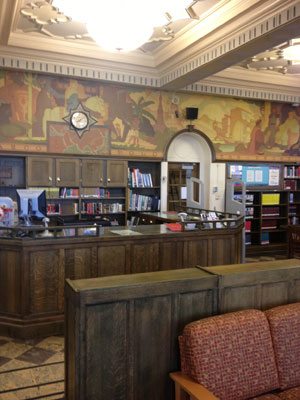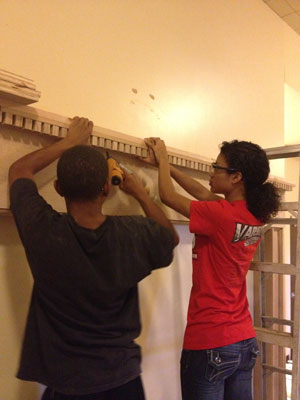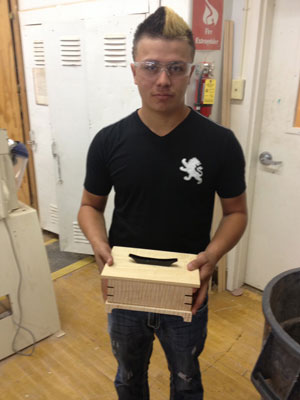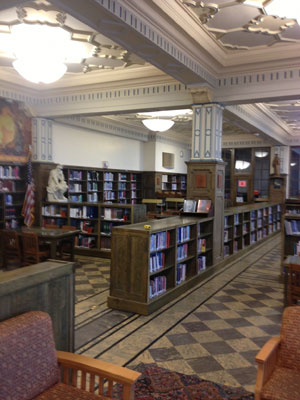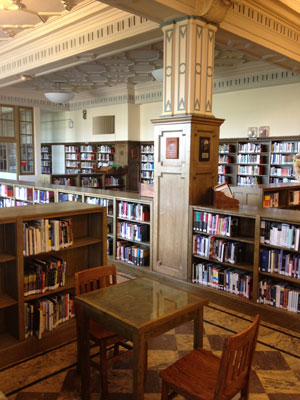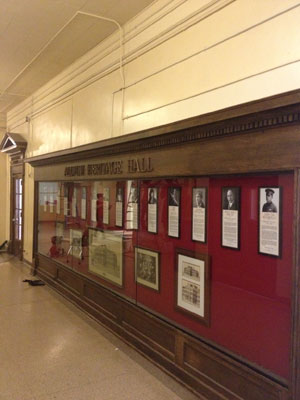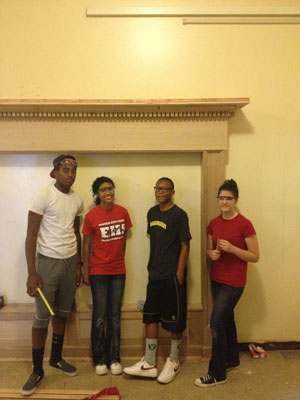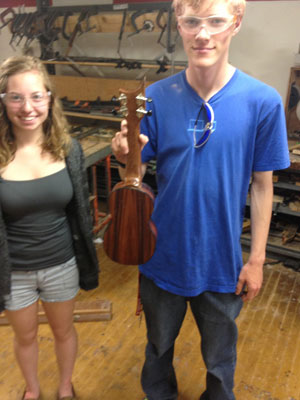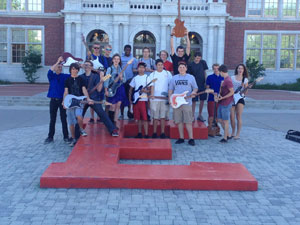
It might be the middle of summer, but shop teacher Joel Noble of Denver’s East High School is still teaching — in a manner of speaking.
Starting about 12 years ago, Joel began hiring a student work crew to help him with the school and community projects people asked him to take on during the summer. “People would ask me, ‘Could you come to my house and look at my cabinets?’ I was getting overwhelmed with those sorts of requests, and I asked if it would be OK if I put together a bid that included student workers.
“It’s been a win-win. It saves the school, and the community, money; rather than the school hiring an architect and a cabinet shop, they can get our building improved. The kids get a summer job contracted at a good rate of money. Everybody wins.”
The kids also learn job skills: to quality for the summer work crew, which usually consists of 6 to 10 students, they have to go through an interview process with school and community representatives before the summer starts: dressing appropriately, answering questions and so on. During the school year, “One of the first things I tell them is the work they do in class is part of a job. They work on being on time, following directions, getting dimensions correct. In the second semester, I bring in a person who’s an expert on writing resumes and has actual interview questions.”
Joel himself did not have a straight-line career to becoming a shop teacher. Himself a graduate from East High, he worked for a few years building guitars and would volunteer in the school’s woodshop to help out his own shop teacher. “My hours of volunteering kept increasing,” and when the previous teacher was ready to retire, he suggested that Joel apply for the job. In his early years of teaching, he was simultaneously attending night school in order to get his teaching license.
Now, among other duties, Joel is teaching two basic woodworking classes, and a third that usually focuses on guitar making and advanced cabinetry. There’s usually 30 to 35 students per class, which Joel says has “gone up quite a bit” over the years — but “it’s pretty rare to get a kid who’s done any woodworking at all” before starting the program.
During the first semester of the first year, Joel walks the students through all the machines and techniques via the projects they build. “Along the way, the earn a safety license, so they can use all the equipment. We treat it kind of like a driver’s license,” including the student’s photo on the card, Joel said.
The first project for basic woodworking is taking a plank from a cedar fence and turning it into dimensioned lumber that can be used to cook salmon on a grill; the second project, designed toengage students’ artistic talents, is using a lathe to turn a magic wand. Via contract with a local toy and game shop, students’ wands that meet certain standards can be sold through the shop. Another local company, this one a skateboard manufacturer, comes in and talks to students at the time of the third project, a skateboard.
The students then go on to spend a semester primarily making boxes and, at the end of that class, if they’re planning to continue in woodworking, they offer feedback that helps determine their project for the following year. “The guitars are really cool,” Joel said. “We have kids doing their first musical instrument that are as good as any you would buy in a store.”
He’s also impressed with projects the students have built during the summer work crew sessions. For instance, the school library is registered as a historic site and was restored in 2007. “The students designed, constructed, finished and installed the tables, peninsula bookcases, some of the wall cases and the circulation desk. A ton of work went into those things, and it’s hard to believe, looking at it, that it was assembled by a group of students.”
The students working during the summer have access to the same school shop equipment used during the school year, including a SawStop table saw, Laguna band saws, planer, jointer, miter saw, scroll saws and a CNC router with a 36″ x 48″ table — plus “a lot of antique chisels and hand planes,” Joel said.
They’ll do designs and shop drawings using CAD and, for this year’s project of building two display cases for the alumni Heritage Hall to hold displays honoring well-known alumni, the students have planed the raw lumber, jointed it, and run it through the table saw to make molding. They built the frames of the cases, were putting the trim on last week and planned to stain the cabinets this week before putting the glass in. The cases are 25′ long and 9′ tall, built from quartersawn white oak; a previous student group built two cases in 2008. (Other student groups have also built cases for memorials to alumni who served in World War II or were killed on Sept. 11, 2001.)
At the end of the summer, the students have a set of photos of the items they’ve built. If they’ve not yet applied for college, Joel said, they can use the portfolio as part of their college application. Although one former student pursued woodworking at Rhode Island School of Design and has recently opened his own business and design studio, more commonly, Joel said, the kids who are in the woodshop program at East High School have also tied it in with other things, like the robotics program, and will go on to do some sort of engineering. Out of this year’s morning work crew, however, new graduates James and Racia (pictured at the left side of the photo; Jelani and Hannah are at the right) are thinking about becoming a shop teacher and going into pre-med, respectively.
Joel notes that his summer work crews are “50/50” boys and girls. Although enrollment in school year woodworking classes used to be all boys, total enrollment in next year’s classes is about one-third female.
Since the students have created many of the projects around the school, they treat them with respect, and encourage their peers to do so also, Joel said. “It gives them buy-in to the school. We have a lot of longevity to the projects.
“Everybody wins,” he said. “The kids make more money than if they worked at McDonald’s for the summer.” And, for himself, “It’s a lot of fun for me. I’m one of the luckiest people; I get to do a job every day that I love: design and build furniture, and be around high school students and see the years go by and see them go places where they otherwise wouldn’t. It makes me really happy.”
